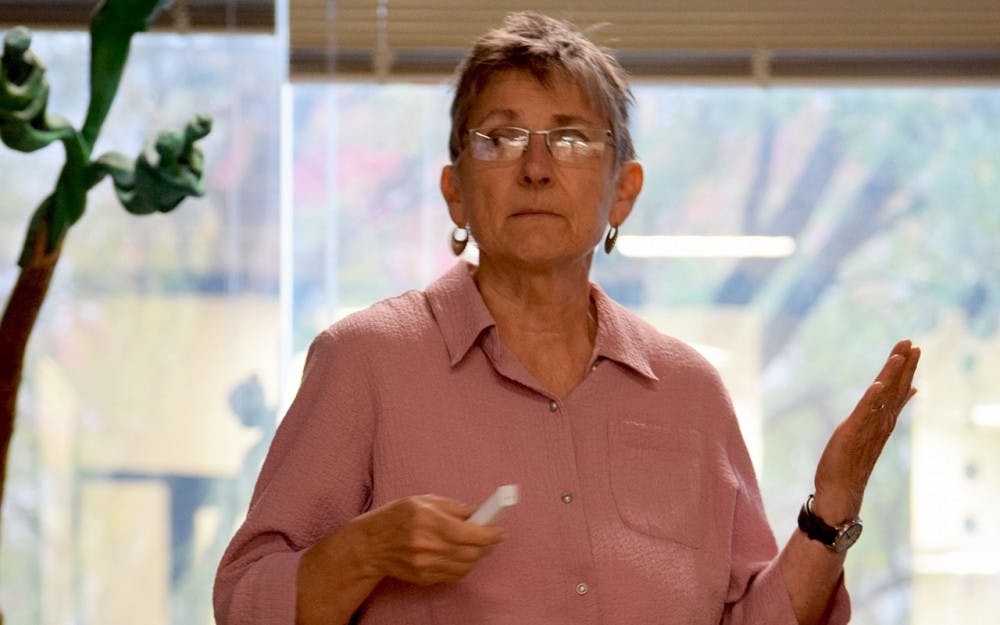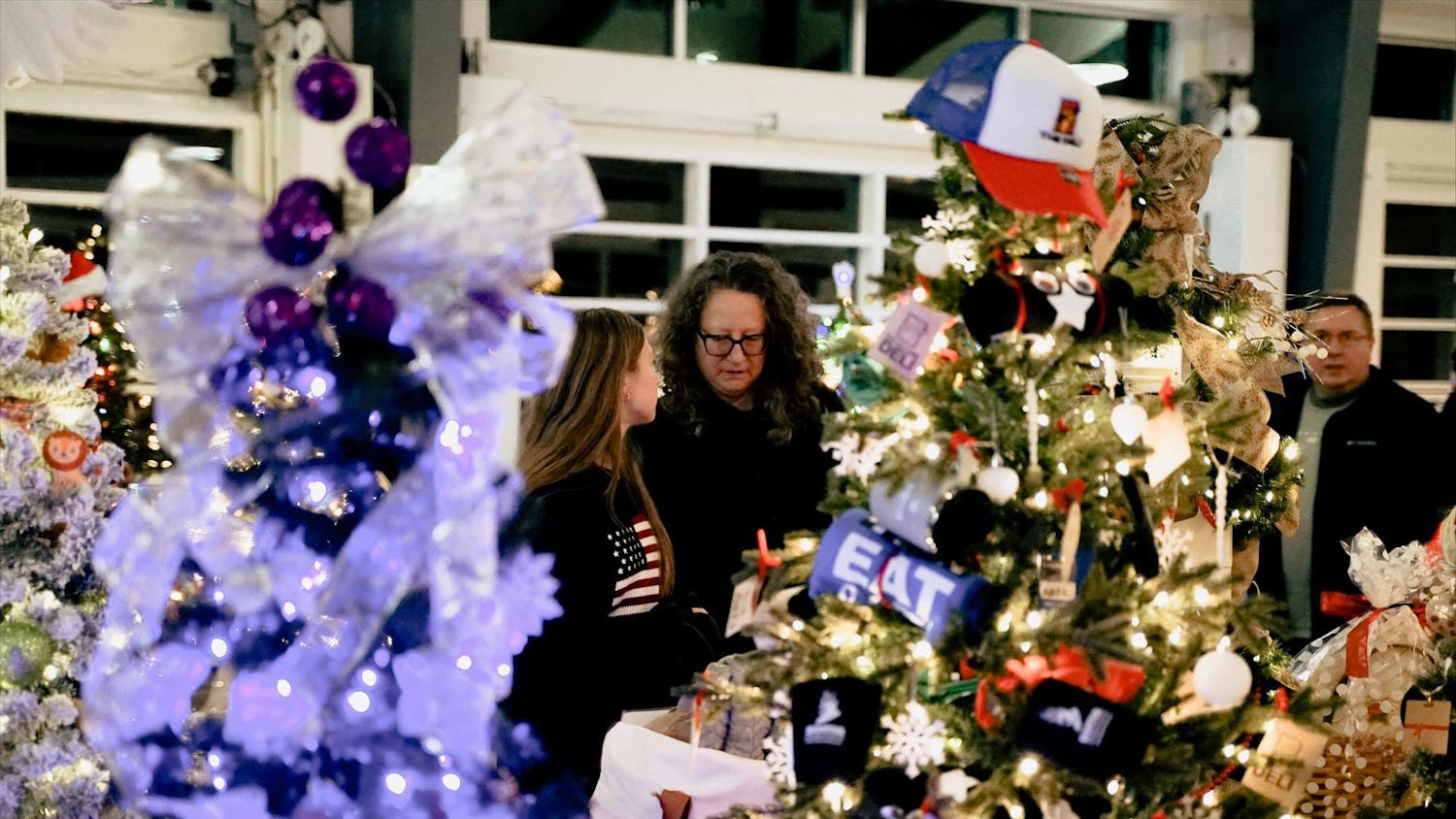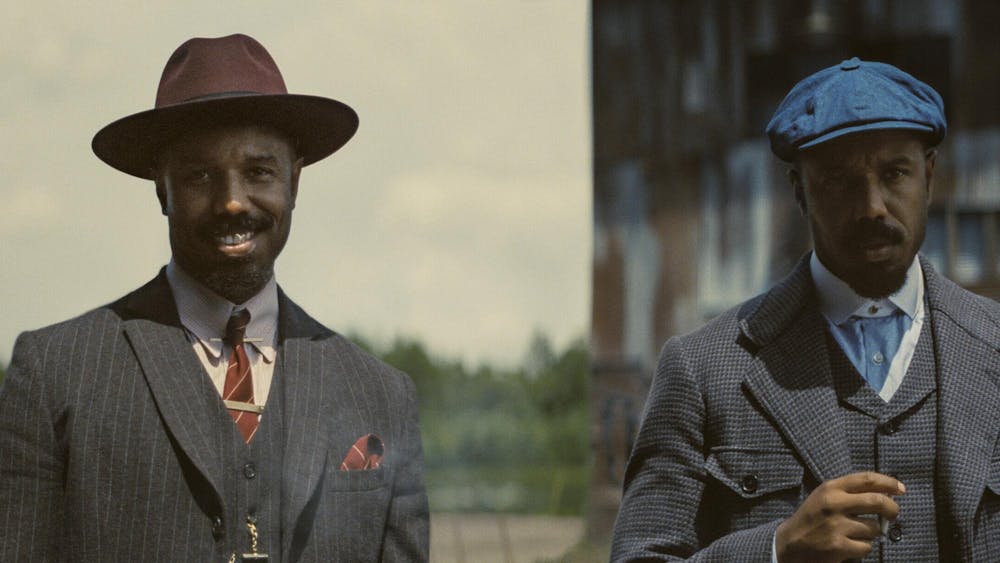The Fine Arts Library’s Artists’ Book Collection contains a selection of works by authors around the Midwest that push the limits of traditional page-by-page book form in some way.
In conjunction with this collection, the library has developed a visiting author lecture series that welcomed Bea Nettles on Thursday. Nettles is an author and photographer who has been publishing autobiographical works since 1970. Nettles spoke about her work and connections to the topic of beauty, inspired by her knowledge of Themester.
“I thought I would go through my work and try to tie it into the campus theme of beauty,” Nettles said. “For me, that was really kind of entertaining because I have never really addressed it by name.”
Nettles, surrounded by books and watched by about 30 students and faculty members, delivered her lecture in the middle of the library.
The works she donated to the library include an accordion-style book, “Aging Gracefully,” that is made up of photos depicting her mother, Grace.
Nettles began her talk with one of her quickprint images, an image from her childhood layered on another image using a method that pre-dated Photoshop.
Nettles then continued to talk about her first big project: a deck of photographic tarot cards which she said was the first of its kind.
“I did it when I was 23 years old — it started with buying that dress in a thrift shop and posing for a self portrait as the queen of stars,” Nettles said. “And then I had a dream that night, wouldn’t it be interesting to make a tarot card deck photographing all my friends?”
Nettles said because there was no editing software, every pose, from a devil holding fire to a man hanging upside down, had to be staged.
Nettles also talked about her book, “Life’s Lessons: A Mother’s Journal,” chronicling her life with her children.
“At this point, I had two kids running around this house, I was still teaching — I have always taught full-time — and keeping my art practice going, so doing these three jobs as well as I can,” Nettles said. “Polaroid was a lifesaver. I could see an image, know I had it and not print it if I had no chance to do that.”
Nettles said her focus with this particular work was to allow herself to trace the lessons her children learned in school and in life. The lessons sometimes came from something as simple as a missing poster on a milk carton.
“Milk cartons would come into the house with pictures of kids who had been stolen or abducted,” Nettles said. “Meanwhile, my kids are seeing these at the breakfast table, and it’s scaring the shit out of them, especially my little son, who couldn’t read, and his sister would read it to them.”
Nettles also shared some more contemporary works. She said she enjoys traveling around the Midwest and beyond and photographing headstones with distinct last names and compiling those words into passages or even full stories.
Nettles’ latest work in this style is titled “Dante Enters Hell,” which she calls a plot summary of Dante’s “Inferno” and refers to both the use of the project’s headstones and the topical inspiration for the work.
“I couldn’t stop. My husband wishes I would, but I can’t,” Nettles said. “I keep being amazed, astonished, astounded by the variety of last names.”
Elizabeth Claffey, assistant professor of photography in the Department of Studio Art, said she has found Nettles’ work inspiring since she first learned about Nettles’ books as a graduate student in 2010.
“I was immediately drawn to her work for its brave content and aesthetic qualities,” Claffey said. “She is a visual storyteller. Bea tells incredibly personal stories that embody her personal issues.”
The depth of Nettles’ work and the topics she covers distinguish her from other artists, Claffey said.
“She tells the stories I had longed to hear as a young professional artist and educator — stories of family, stories of loss, stories of memory, stories of the landscape and stories of the unknown,” Claffey said. “She was a pioneer of photography at a time when few women were recognized as professional artists.”






